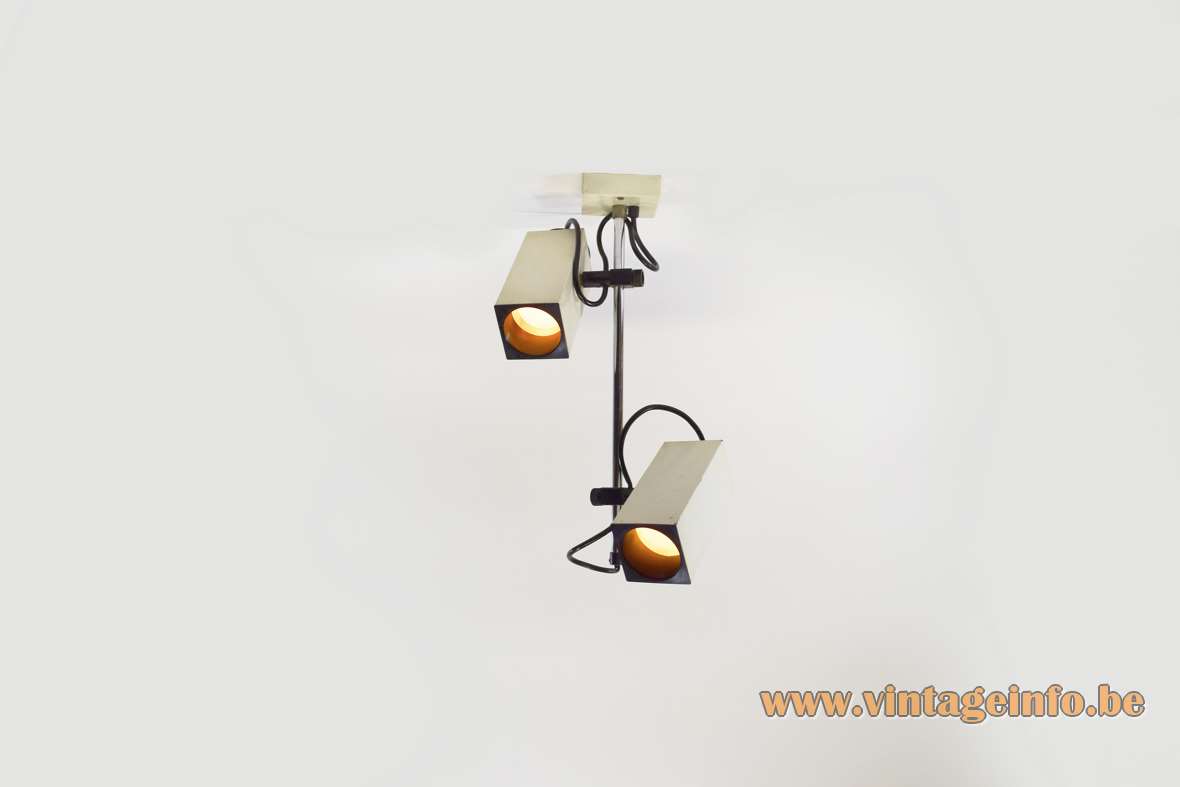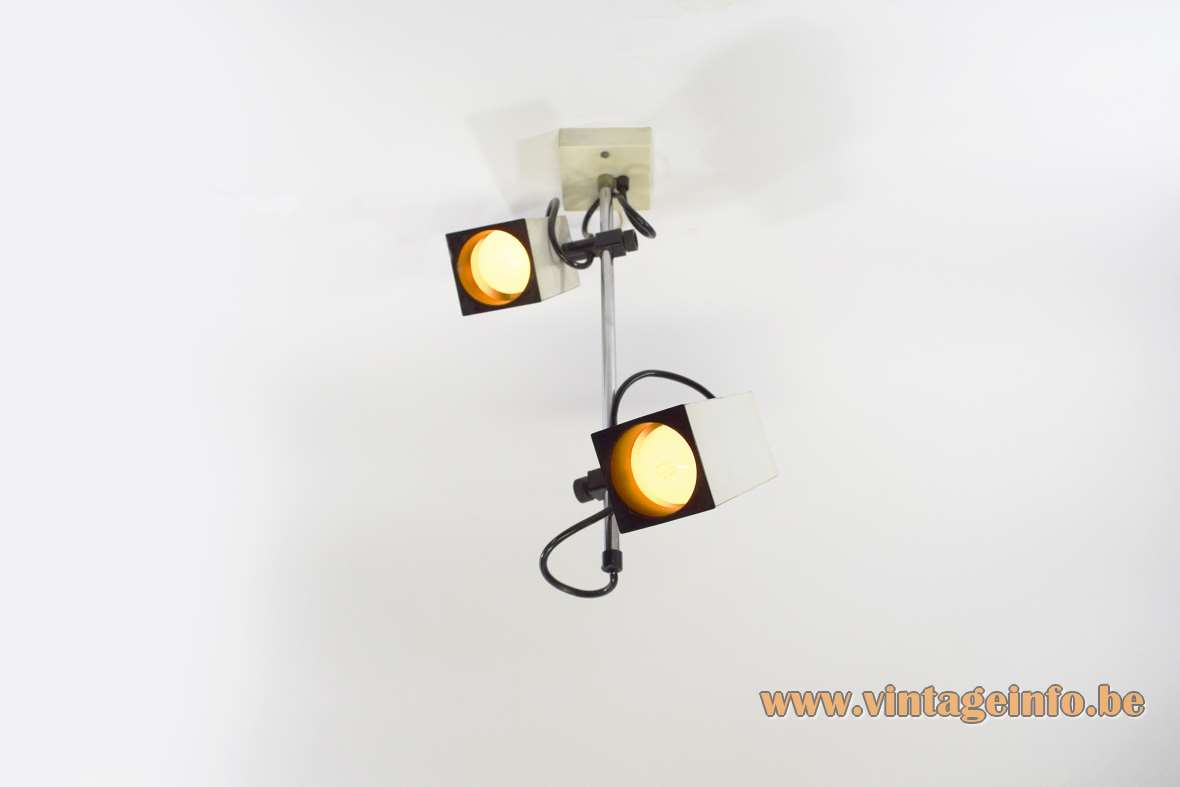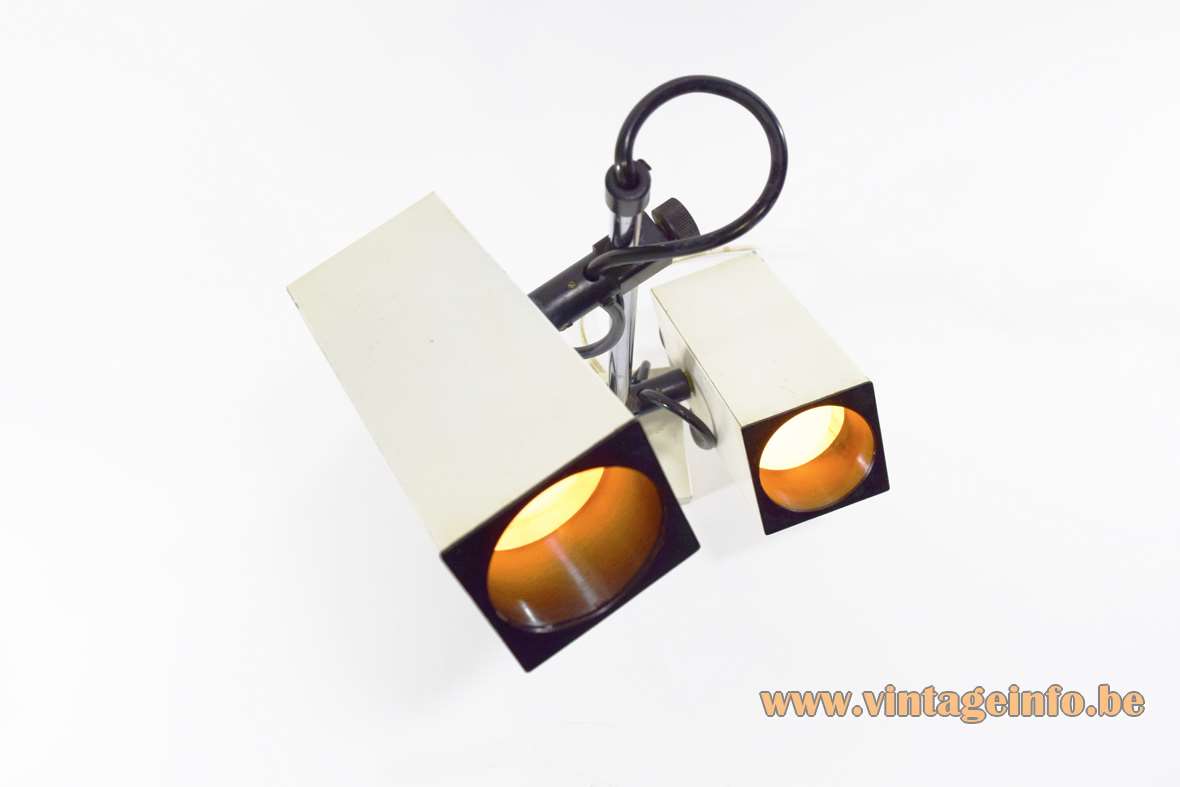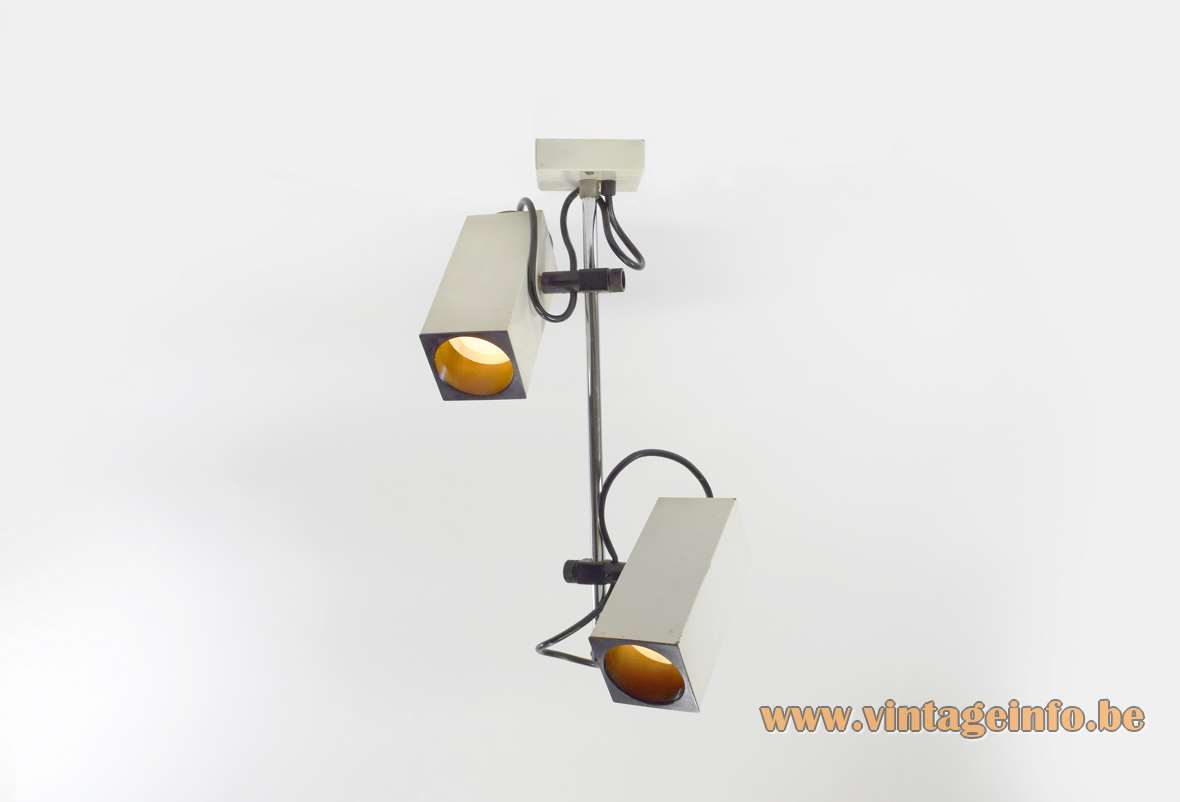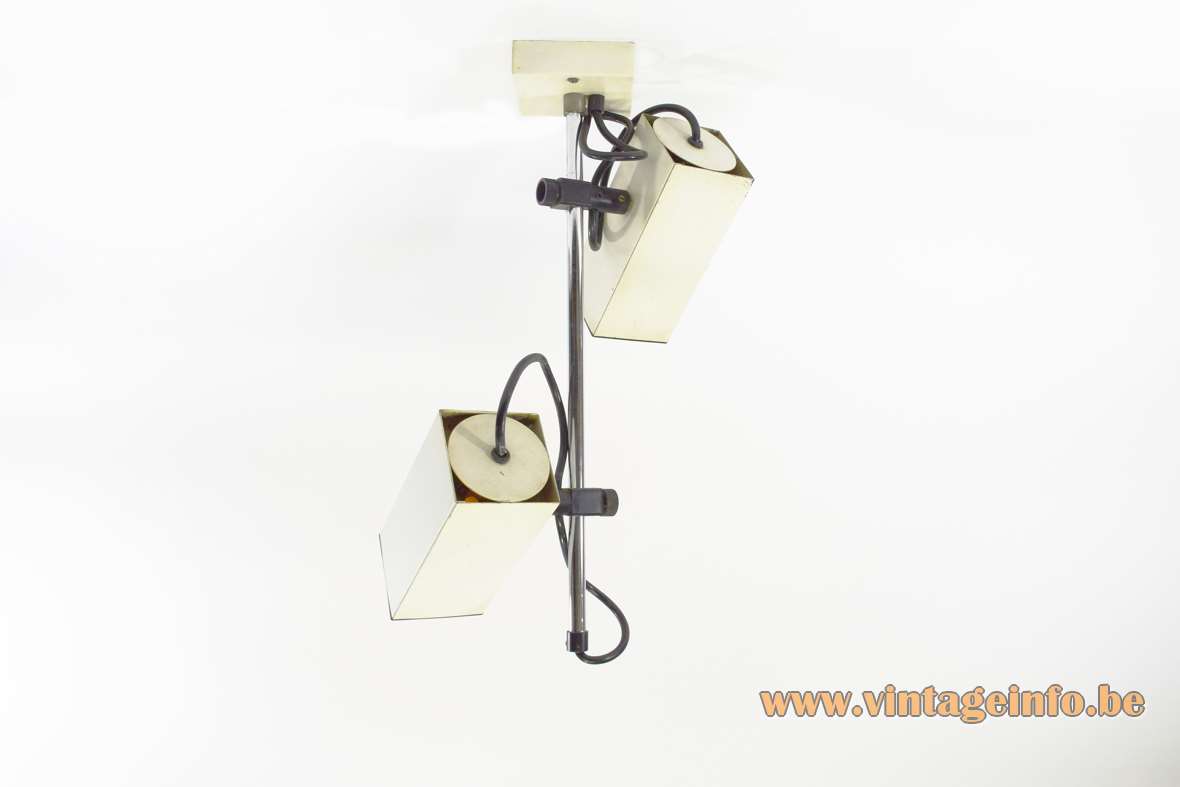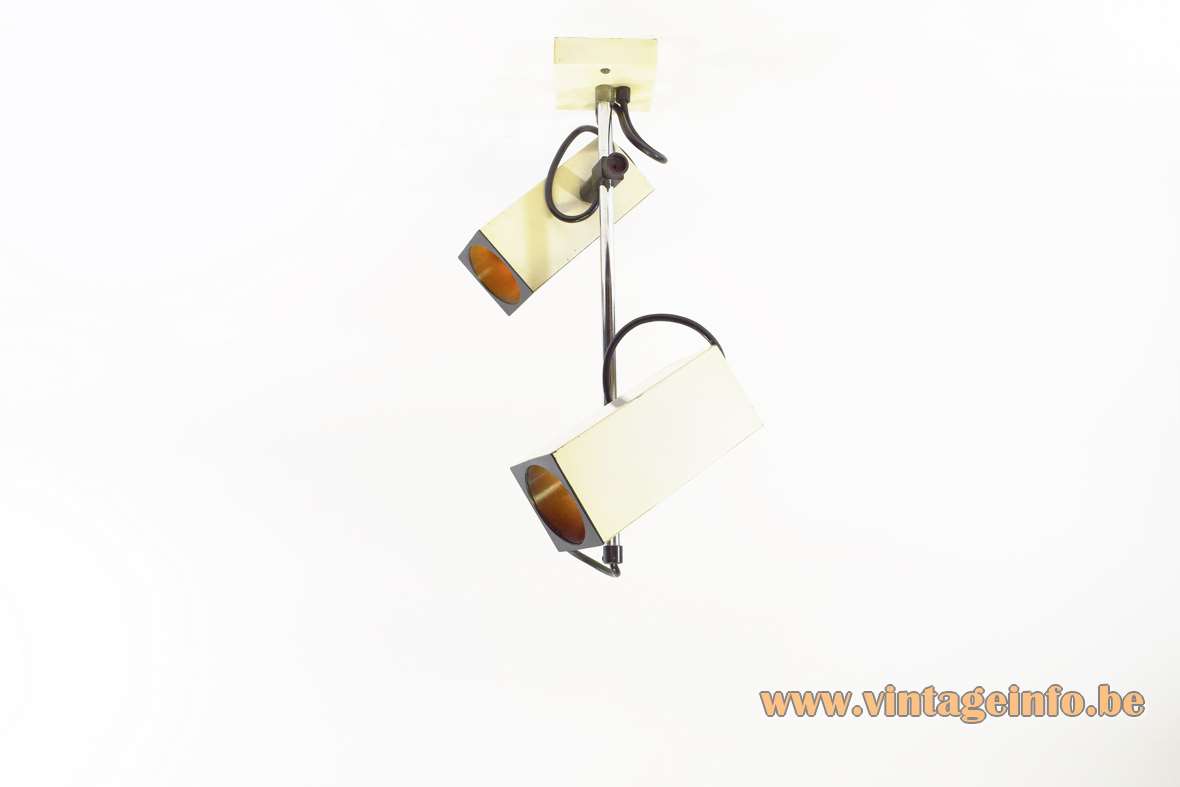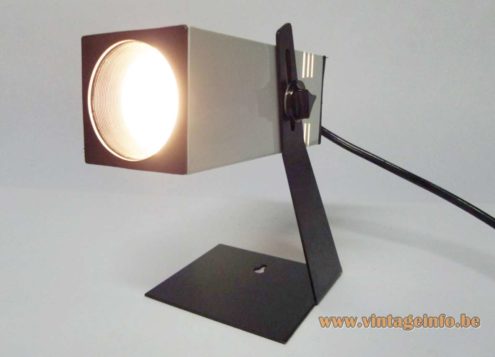Links (external links open in a new window)
The complete history of the Philips company
Gebrauchsmuster – Wikipedia (in German)
Vintageinfo
1970s square tube table lamp – Fase
Double Spotlight Ceiling Lamp
Materials: White painted metal (iron) square tube or beam lampshades. Black plastic parts. Chromed metal rod. White painted square metal ceiling mount. Porcelain E27 sockets.
Height: 50 cm / 19.68”
Lampshades: 16,8 x 7,3 cm / 6.61 x 2.87”
Ceiling Mount: 9 x 9 cm / 3.54 x 3.54′‘
Electricity: 2 bulbs E27, 2 x 100 watt maximum, 110/220 volt.
Any type of light bulb can be used, not a specific one preferred.
Period: 1970s – Mid-Century Modern.
Designer: To be appraised.
Manufacturer: Philips, Eindhoven, The Netherlands – Turnhout, Belgium.
Other versions: This double spotlight ceiling lamp exists in several colours and was produced with 1, 2 or 3 lamps. Also made as a wall lamp and floor lamp.
The plastic mechanism with screws to adjust the spotlights for this lamp were made in Germany. On the plastic screws is written/pressed DBGM. In all probability these parts were made by the OMI company.
DBGM is not some type of company, but it is German for utility model, “gebrauchsmuster” in German. Only used in Germany and Austria: Deutsches Bundes-Gebrauchsmuster. To say it simple, the plastic mechanism is licensed for some period, most of the time 10 years: the small brother of a patent.
Koninklijke Philips N.V.
Inspired by the fast-growing electricity industry and the promising results of Gerard Philips own experiments to make reliable carbon filaments, Frederik Philips (his father) financed the purchase of a modest factory in Eindhoven, The Netherlands in 1891. Frederik Philips was a Jewish banker based in Zaltbommel.
In 1895, after difficult first four years and near bankruptcy, Anton Philips joined the company. He was Gerard’s younger brother. With Anton’s arrival, the family business began to expand rapidly. The brothers changed their family business by founding the Philips corporation. They laid the foundations for the later electronics multinational.
In 1930 the first shaver of the Philips company was introduced and was simply called “The Philishave”.
A day before the German invasion in the Netherlands on 9 Mai 1940, the Philips family fled to the United States of America, taking a large amount of the company capital with them. Operating from the US as the North American Philips Company, they managed to run the company throughout the war. After World War II the company was moved back to the Netherlands, with their headquarters in Eindhoven.
OMI
The OMI company is Otto Meinzer GmbH & Co Metallwarenfabrik from Iserlohn in Germany (Otto Meinzer Iserlohn). It is a manufacturer of chromed brass joints for the lighting industry. The company was founded more than 50 years ago. They never produced lighting.
Companies that uses OMI parts are among others: Atelje Lyktan Sweden, Massive Belgium, Fase, Hustadt Leuchten, Abo Randers Denmark and many more.
